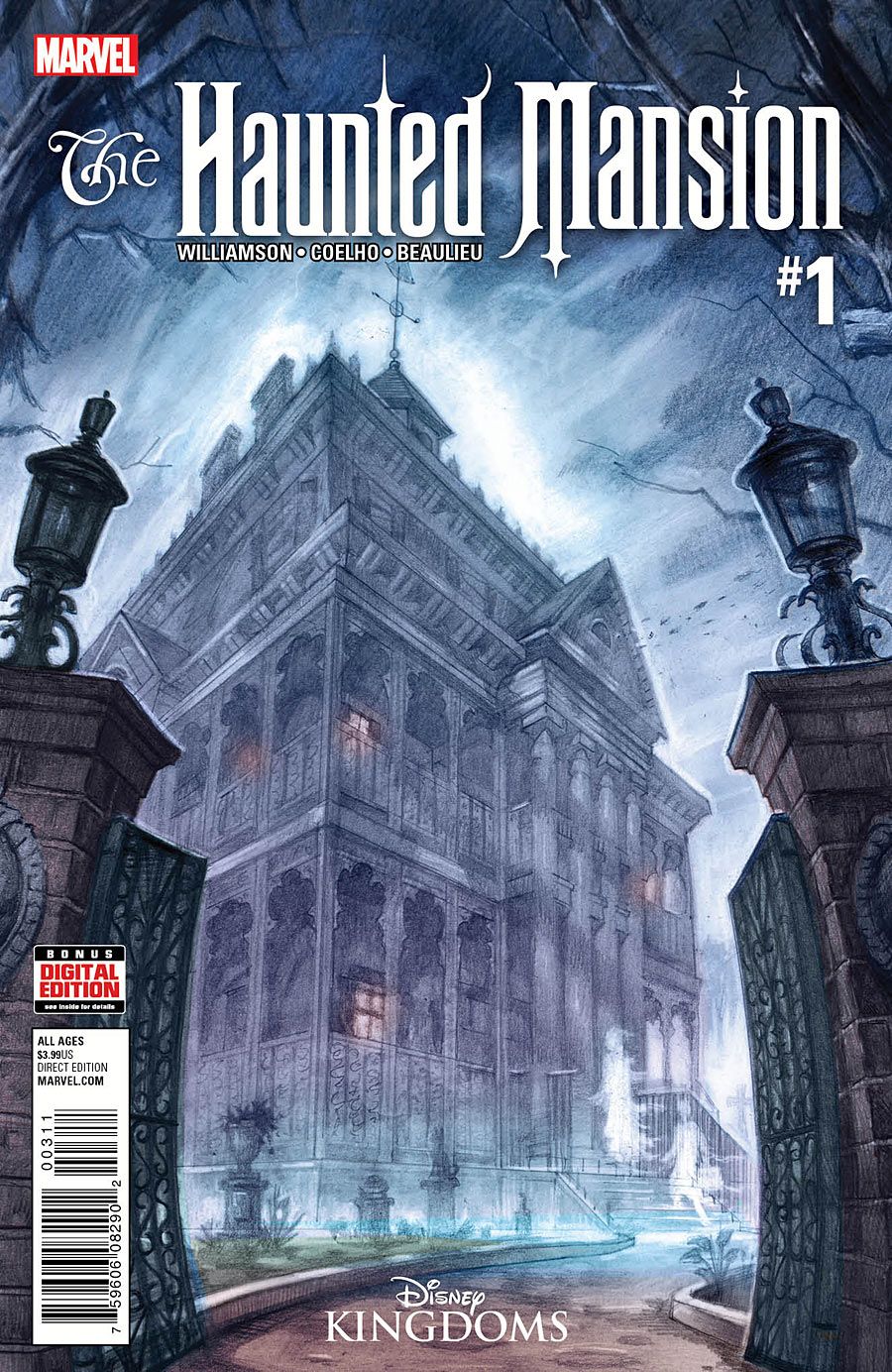The first page of Joshua Williamson and Jorge Coelho's "The Haunted Mansion" #1 introduces the legend of the haunted mansion, while the second page introduces Danny, who will end up going inside the mansion despite what he's heard. It reads like the beginning of a children's book. Although the dispatching of the grandfather is no surprise, the unexpected humor works.
Danny's one-sided conversation at his grandfather's graveside has the rhythms of someone confiding in a dear friend. In many ways, Danny is the stereotypical young hero: brave, caring, ready for action. This graveside scene and Danny's feelings about his family aren't anything new, but Williamson's dialogue and Coehlo's art are emotionally convincing, and thus get the reader invested in the hero.
The art makes everything look like it's been carved out of wood. Coelho has a strong, very expressive style. Though his faces and figures lack elasticity or suppleness, his body language and facial expressions are eloquent. Danny's big grin and relaxed posture when he talks with grandfather speak volumes without Williamson needing to put anything into words.
Coelho's cross-hatching shading technique creates very strong three-dimensional space. The level of detail is exquisite in most panels, but he can also pull off a minimalist silhouette, like when a crow flies past. There's a lot of line variation, too, from delicate web-like filaments for the texture of dirt roads to thicker, woodcut-like lines that form the underside of a wave of snow crashing down a mountain. Early in the story, Coelho sets the mood and primes the reader emotionally for the hero's journey and ordeals. A thick mop of vibrant foliage seems to shelter Danny when the reader first sees him alone, but -- as he walks home -- the landscape grows colder and more threatening. It's melodramatic but effective.
Beaulieu's colors are gorgeous for the outdoor scenes. His skies are especially attractive. He's daring enough to juxtapose hues like powder pink and slate blue in a panel that contains the first glimpse of the Haunted Mansion. His cold blues and purples make the interior of Danny's home feel appropriately melancholy and claustrophobic. Beaulieu's work complements the tension and mood of Coelho's linework. Together, their landscapes and interiors are powerful enough to contain paradoxes of fragility and power, cruelty and beauty.
Unfortunately, once Danny is inside the Haunted Mansion, Williamson opens the faucets wide and floods the environment with threats in such rapid succession that the suspense flags. Danny encounters all the denizens of the Haunted Mansion, all popping out like a line of jack-in-the-boxes. By the time he reaches Leota's chamber, all the apprehension and realism established in first half of the comic has died. This whole sequence ties the comic closely to the Disney theme park ride, but encountering special effects in a comic is only a few notches more exciting than reading a tour guide.
Madame Leota's big speech is a massive information dump. The dialogue is weak here, full of hackneyed phrases like "you're our only hope." Williamson also borrows lines from Leota's incantation in Disney's Haunted Mansion; this adds authenticity, but unfortunately the kitschy pleasures of the theme park don't transplant well to the story. Rhyming words like "Halloween" and "tambourine" just sound silly here. The curtailing of Leota's powers is too convenient and hard to believe, and her directives to Danny are full of stale tropes. Williamson does manage to at least establish the dimensions of Danny's mission, but all the mood and atmosphere generated by the first half of the comic is lost.
The second half of "The Haunted Mansion" #1 falls flat with too much wordy exposition and rushed pacing. Unfortunately, the tie-in elements are the weakest part of the storytelling. The story is all-ages appropriate, but doesn't add anything substantial or new to the media property yet.

